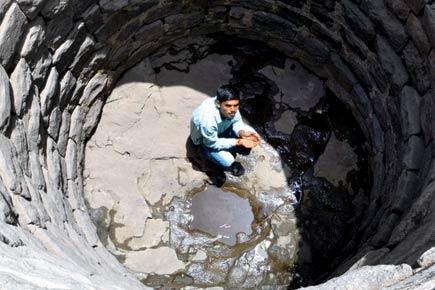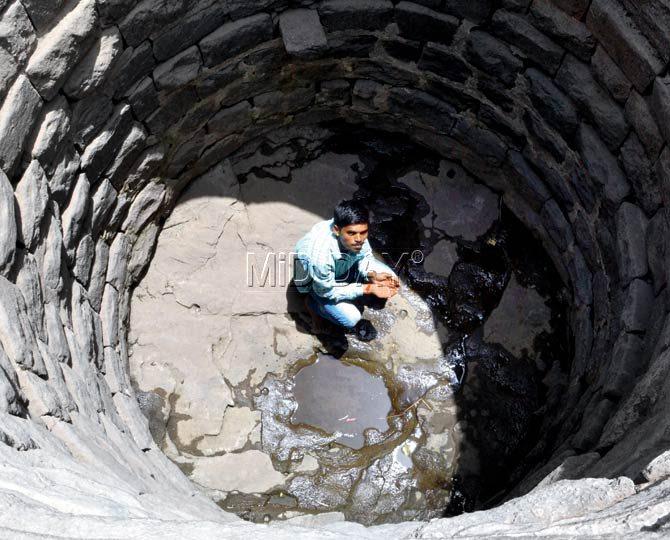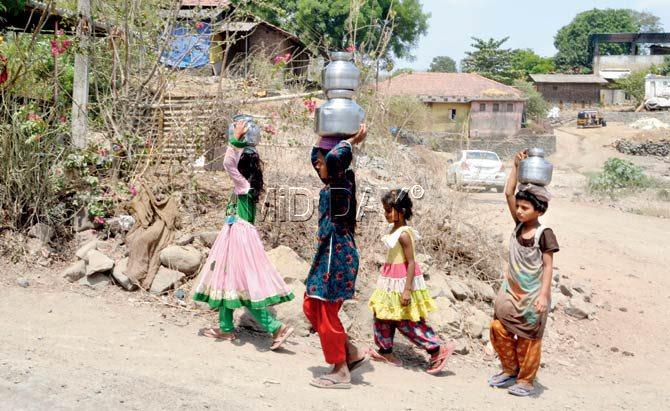Owe Camp village, to which Koyna dam settlers were shifted in 1961, are still waiting for the government to put them on the growth map

Kundabai Batose (56) has seen a whirlwind of change around her — everywhere except in her tiny village. She was just three months old when her family was uprooted — along with several others — from its village, Akalpe, in Satara district’s Jawali taluka to make way for the Koyna hydroelectric project and shifted to the outskirts of Kharghar in 1961. The new settlers of what came to be known as Owe Camp village were promised the moon by the state government at the time of rehabilitation: a planned town with all facilities.
 A villager tries to scoop whatever little water he can from one of the two wells in Owe Camp village in Kharghar
A villager tries to scoop whatever little water he can from one of the two wells in Owe Camp village in Kharghar
ADVERTISEMENT
The long wait for the government to make good on its word has left Batose cynical. For the town planners, the village, with 350 hutments across just 1 km, has been a blind spot. It lacks even basic facilities like adequate water. Harsh summers only make matters worse.
Plodding on
Ramchandra Jadhav (29), a resident, says there are two wells in the village, both of which are bone dry. “Till January every year, there is ample water in them. But by May-end, they dry up.”

Even children are forced to trek 2-3 km each day for water. Pics/Datta Kumbhar
The City and Industrial Development Corporation of Maharashtra, the town planning agency of Navi Mumbai, supplies water to the village through a 60,000-litre tank from 6.30 am-7 am each day, but that is barely enough for the population of 3,000. “On an average, one tap supplies water to 10 houses. We get just four to five buckets of water, which is reserved for drinking. How are we supposed to carry on with our day-to-day activities?” complains Jadhav. Residents have no go but to trudge 2-3 km to other villages, scouting for water.
The back of beyond
It’s the sharp dichotomy within a developing Kharghar that’s riled up the villagers. Owe Camp is just 5 km from the Kharghar railway station, but is nowhere on the growth map.
Jadhav alleges that several residential complexes in the city centre, in contrast, receive 24x7 water. “The government had neglected all along. No one is ready to hear our problems,” he rues.
Among the many assurances made by the government, only a municipal school has come up in the village over the years. “We don’t have our own gram panchayat. For revenue, funds and other works, we have to depend on the Owe gram panchayat (GP), which has five villages under its jurisdiction. Tribal communities in forests 10 km from our village are better off than us and get basic facilities, at least,” alleges Maruti Salunke, a senior citizen.
The water pipeline to the village was laid only in 2011. Supply is also erratic, says Pandurang Rewane, a resident and former member of the Owe GP. “Three times a week, there are issues with water supply.”
Solution under their nose
Owe Camp is just 500 m from the famous Pandavkada falls. Jadhav suggests that water from it be stored during monsoons for use during summers. “Millions of litres of water at the falls go to waste during the monsoon. This can be used for the village later.”
 Subscribe today by clicking the link and stay updated with the latest news!" Click here!
Subscribe today by clicking the link and stay updated with the latest news!" Click here!







